Continuing the ongoing series of interviews on fantasy user interfaces, it’s my pleasure to welcome Daniel Højlund. In this interview he talks about the evolution of motion design in the last ten years, his work process, the balance between ideas and tools, and the pace of working on big sci-fi film productions. In between and around, Daniel dives deeper into his work on “American Assassin”, “The Martian”, “Blade Runner:2049” and the recently released “Pacific Rim: Uprising”.

Kirill: Please tell us about yourself and the path that took you to where you are today.
Daniel: My name is Daniel Højlund, and I’m a motion designer from Denmark. I first got started in this field about 10 years ago, but my interest in computer graphics dates back to my late childhood when through my mum’s work computer I got access to a few fun games and programs. I’ve always been interested in using computers for something in my career, as soon as I realised becoming a football (soccer) player wasn’t going to happen, even though I wasn’t quite sure what I wanted to do with it, or what that job was going to look like.
I started as a multimedia designer in 2007, and back then I actually thought I was going to be a Flash web designer. Today I still find that quite difficult to fathom, but back then it was quite a hot thing, and it was only by pure coincidence that I kind of stumbled upon motion graphics when I did my final semester as an exchange student in Kuala Lumpur in 2008. The university had a two-week introduction phase to different creative courses that you were able to take. It was everything from photography, video editing, classic 2D animation, drawing, or more technical 3D classes etc.
One of the courses was called ‘motion graphics’. I was intrigued and joined on a two-day introduction course to it. Amongst the showcases was some cool MTV idents and I was instantly fascinated and taken by the possibilities and the coolness of it. It looked like so much fun creating it, and even though I had seen similar stuff on TV many times before, I could not believe that this was actually a profession and people got paid to do this. I was on the path to becoming a web designer, but I pretty much instantly ditched that and went all in on the motion design course and hoped for the best.
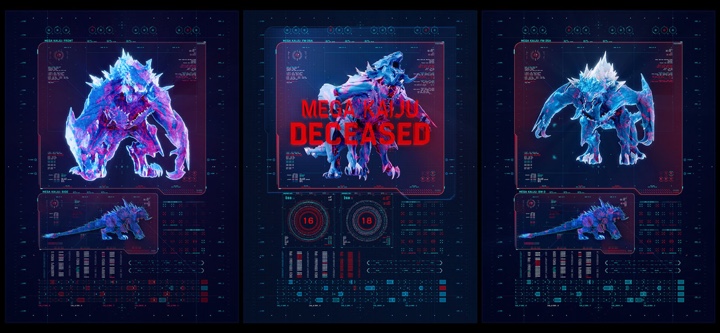
Screen graphics for “Pacific Rim: Uprising”, courtesy Territory Studio.
I passed, but when I came back there wasn’t really any motion graphics work around in the city I lived at that time, and I ended up spending a couple of gap years working various jobs and traveling and doing some personal motion projects on the side. I could not let go of it. Then in 2011 I found this interaction design degree in Copenhagen, which had a motion design module. I applied and was fortunately accepted in.
During that degree I went to Melbourne, where I studied for half a year as an exchange student again. I took courses in 3D character modeling and rigging, as well as classic 2D animation. After that I got an internship in London at Territory Studio, when David Sheldon-Hicks decided to take a bet on me, which has now set the path that I am currently on today.
After the internship, I went back to Copenhagen to finish my degree. Straight after that summer I moved permanently to London where I started out freelancing, but eventually became a full-time staff member at Territory, where I ended up spending altogether 5 years. I was there up until recently, and this August I decided to relocate to Copenhagen where I’m now starting life as a freelancer.
Kirill: Do you think it’s easier to start in the field today than it was 10 years ago? There are more tools at your disposal today, but the demands are a little bit higher and you need to know more about those tools.
Daniel: It depends on what is being asked of us in terms of the work. When I first graduated back in 2008, there wasn’t a whole lot going on in Denmark at that time. I believe I managed to find 3 places that did a little bit of motion design work, and this was in the second largest city in Denmark (not that it counts for much on a global scale!). Compared to 10 years ago quite a lot has happened with handheld smart devices for example, and today we have screens existing everywhere around us, and on us, and there is a much larger demand for more people to output content. So even though there is way more people doing motion graphics today than a decade ago, the demand for content has exponentially increased as well with the amount of platforms that needs to be populated.

Screen graphics for “Pacific Rim: Uprising”, courtesy Territory Studio.
In terms of getting work I think there is a lot out there — every company, tv show, brand, artist, sports franchise, social media – you name it – are demanding video content in some forms these days. The competition is obviously very high for the most prolific big name jobs, but that will always be the case in any industry, and follow trends. But maybe those jobs are not what you want to be doing, and maybe you want to make more meaningful content in other ways, whatever that is to you personally. Try and get an idea of what type of work you want to be doing, and not just run aimlessly in the direction of everyone else just for the sake of it. Chances are you won’t arrive at a very happy place, if you make it there.
In terms of learning the technical skills and how-to’s in the softwares used for motion design is far better today, than 10 years ago — purely due to the amount of high quality training content that lives online now. The amount of knowledge sharing online today is tremendous and it will only keep on increasing. In that sense I guess it’s a little easier and more straightforward for anyone to give it a go.

From Daniel Højlund’s sketchbooks.
Kirill: I found these lovely hand-drawn maps that you posted recently to your Instagram stream. When you start a new project, do you find yourself sketching on a piece of paper, or do you go exploring the digital realm?
Daniel: It depends on what the task is at hand, I think. Generally I start scribbling down early on and get any immediate thoughts down on paper. I find this process fast, and it comes from a place based on your intuition and gut feeling, and is not yet stained and influenced by external noise.
There’s usually something that naturally surfaces that you might want to note or sketch down before you start numbing it with endless browser scrolling and screen glaring. That said, Pinterest, Tumblr, Behance, ArtStation, you know the drill, also has their part to play. Those are great places to be inspired and get exposed to new work that others are putting out there, absolutely. But, it can also be an endless maze if you don’t set yourself some boundaries. I try to set myself a framework prior to doing my online research — maybe this is a time limit for myself, or try to see if I can define something tangible of what it is I am actually looking for before I start scouting the web for something I don’t know what looks like.
In terms of starting on paper – and let’s make it a UI example – it may for me just be defining a composition and figuring out where certain elements need to be going. It may be a rough idea of form, areas and sizes, and the relationship between the hero component in the screen and the smaller graphics. It might consist of some quick shapes, dots, linework and type drawing that comes to me, to see if there’s some interesting elements or constellations to explore. I then find it easier to open Illustrator and start creating the design if I already have a rough visual idea in my notebook of where things go, or roughly look like. I’m terrible at drawing but jotting down some simple bits like these and giving myself some visual references before I sit down in front of the screen, helps me to free up some mental headspace to focus on the design, and find my flow and stride faster, as I have already made some considerations.

From Daniel Højlund’s sketchbooks.
Continue reading »
Continuing the ongoing series of interviews with creative artists working on various aspects of movie and TV productions, it is my pleasure to welcome Arv Greywal. In this interview he talks about his life-long love of movies, the various roles he enjoyed in the art department in the last two decades, the changes the technology brings to building the physical and augmented worlds we see on screen, and what keeps him going after all these years. Around these topics and more, Arv dives deep into his last two episodic productions – “Genius: Picasso” and “Alias Grace”.

Budapest, Hungary – Arv Greywal on the set of National Geographic’s Genius: Picasso (National Geographic/Dusan Martincek).
Kirill: Please tell us about yourself and your path so far.
Arv: I’m Arv Greywal and I’m a production designer working in feature films and more recently in television on limited series. I grew up in Mumbai. My father was an architect, and my entire family had a huge interest in arts during my formative years. I was about nine when my dad took us to my first movie. It was “Lawrence of Arabia”, and it’s still my favorite movie. I watch it at least once a year, if not more. They played it in an IMAX theater in Toronto recently, and I went to watch it again. Still in awe of its beauty, its technical accomplishments and its power to tell an impactful and resonant story.
I remember that as I was watching it, I was enthralled by the story, but I also wanted to know about how it was made. My dad got me a small book on that movie, mainly about the actors, but some back story as well. At that time, the seed for my love of movies was sown. I didn’t know how, but I could really see myself being involved in some way with making movies.
My family immigrated to Canada, to Toronto and after I finished high school, I began my studies in Architecture at university. Toronto wasn’t the film hub it is today and the idea of life in film seemed distant. Yet, most of my free time during university was spent watching and learning about film, reading books and interviews by and with film makers. My favourite section of the library was where all the bound copies of old Cahiers du Cinema were kept.
I finished my degree in architecture and spent the next 4-5 years in that field. Then when the recession hit in the mid-90s, architecture firms were laying off staff by the hundreds. Around that time, I was about to get married, and my wife (also an architect) and I decided to spend all our money on a 3-month trip, our honeymoon; then come back and start brand new careers.
I started sending out resumes to film production companies and designers in early 1995, and after a lot of doors being shut in my face and luckily some meetings, I finally got a job as an art department assistant on a small indie movie. It was perfect. It was the best experience that I could have had. The production designer was impressed with my work, and my ability allowed her to move some people in the art department around to other departments that were understaffed. She and I became the entire art department. We had one carpenter and one art director building things, a set designer promoted to assistant set decorator and I ended doing all the drafting, designing sets, making templates for backdrops, helping with the painting of sets, prop building, set decorating, helping with special effects, etc. It was the best job that I’d had until that point.
I never went back to architecture. I worked on more movies, studios films, doing set design for a few years and then moving onto art direction. It’s an amazing job. I used to go in early every morning to check on people’s drawings and prepare for what we would want to accomplish that day or that week. We stay late after the day was done, for a drink or two and discuss the work. We worked hard and we were working on some of the biggest shows that were coming to Toronto at the time. One morning, I remember moving from table to table, collaborating and creating with my team, working with the paint and construction crew, bouncing back and forth from set and amidst all the frenzy, thinking to myself that this was the best job ever. We had fun.
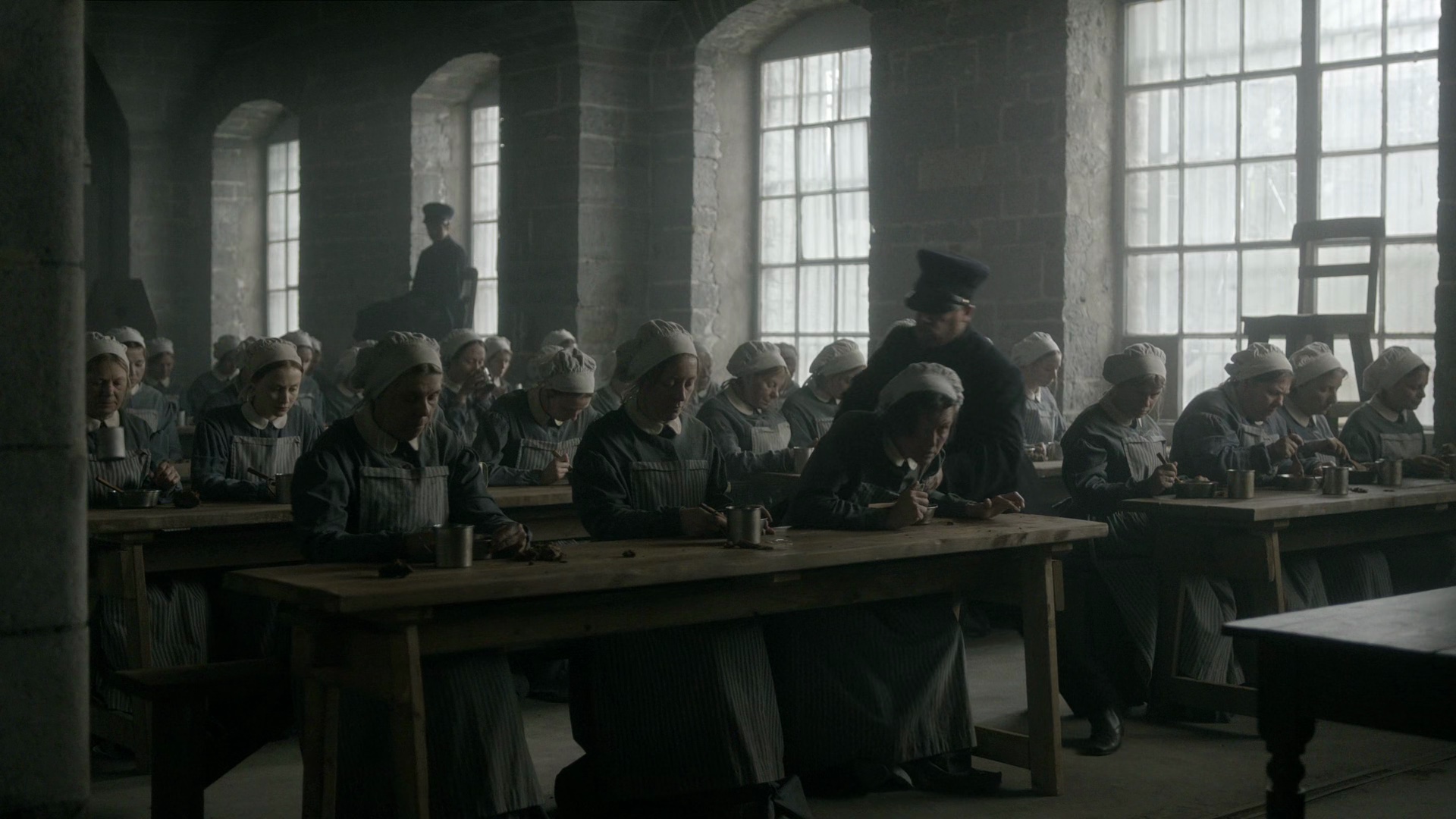
Production design of “Alias Grace” by Arv Greywal.
A couple of movies after I did Zack Snyder’s “Dawn of the Dead”, I got a call from one of the producers, asking me if I would be interested in designing a George Romero movie “Land of the Dead”. I said that I wasn’t really interested. I knew that moving into production design would get me to a more political and a less hands-on level. Luckily, I was wrong about that; since then, I’ve been able to keep my hands dirty, so to speak, negotiating the larger scope that production design requires, but also holding on to the details and doing the nitty-gritty work that just moves things ahead. Nevertheless, I declined initially, but he was persistent, and asked me to give it a try and I agreed.
I did a few sketches of my ideas for that movie. Romero and the producers were visiting Toronto looking at some locations, and my interview with them was supposed to be on that Friday. I got a call from my producer friend on Friday morning saying that they were out of time and couldn’t meet with me. A few hours later, I got another call, and he said that they had a bit of time to talk at the end of the day before they went back to LA. It seemed that even though one of the producers was championing me, the other producers were not sure about it, since I didn’t have any production design experience.
I went in and met with George, only as a fan. I wasn’t expecting anything out of it. I showed my sketches and talked about my ideas, and it was a very pleasant and creative meeting, but I wasn’t expecting anything to come of it. On the drive home, I got a call back. They asked me for a couple of names in LA that could vouch for me as somebody who could do this job. It was a real thrill, but the only reason I agreed to it, was George Romero. I had watched every one of his movies before that and was excited to be collaborating with someone who had single-handedly created an entire genre. That was my first job as a production designer.
It’s a different animal. I’ve been doing art direction for a while, and you work hand-in-hand with the production designer for most of the day. It was a good training, and it didn’t seem totally foreign to me. But I understood the difference.
Kirill: Looking back to the last 25 years or so that you’ve been in this field, what major changes have you seen in the art department as the technology continues evolving?
Arv: The art department itself has changed significantly. We used to hand-draft things. We used to build elaborate models. A hand-drafted set was quite carefully considered. There were a lot of sketches and rough models made. Art department was more hands-on to give the director an idea of size and shape, laying out taped plans on the studio floors before the actual construction would start.
When computers came into the art department, it was fantastic. We would build our models, and we could have a small eyepiece connected to a camera that would walk through. We’d create a Quicktime video of a full set, with as much detail as we could put into it. And now everything is done in 3D. It’s ubiquitous. All set drawings are done in 3D. Then everything is converted into a model for a walkthrough. It doesn’t take much time to layer on the materials to see how they would affect the set. Now I’m excited about 3d printers and we’re incorporating those as a part of the art department toolbox.
I am finding though, that we are making a lot more changes to the sets. You can pull things, raise or lower or move them around. For me it’s better because I can be more involved and get a better feel of the set as we’re designing it.
And the second aspect of it is taking that virtual 3D model and handing it off to the VFX department. They use it as a barebones model for what they need to do. I did a show called “Waco” in which we built the majority of the building. We gave the 3D model to the CG department that did the wide helicopter shots for layering the textures on top of what we’ve built, completing the full building. Even with the ubiquitous incursion of CGI, we still like to build as much as possible.
Another aspect is with previz, where the directors can previsualize how a scene is going to look on any particular lens. It helps resolve a lot of problems that previously would take much more effort.
I art directed “K-19: The Widowmaker” in 2002. We wanted to test with Harrison Ford with a beard. So instead of him spending a couple of hours in a chair with hair and make-up people, they came to us with a photograph of a goatee they liked. We we able to easily put it on a few frames to show them what it could look like on his face.
It has come a long, long, long way since then, but the basic fundamentals are still the same. The evolving technology allows you various venues to be more creative, work within shorter timelines and explore even further the fundamentals of the job.
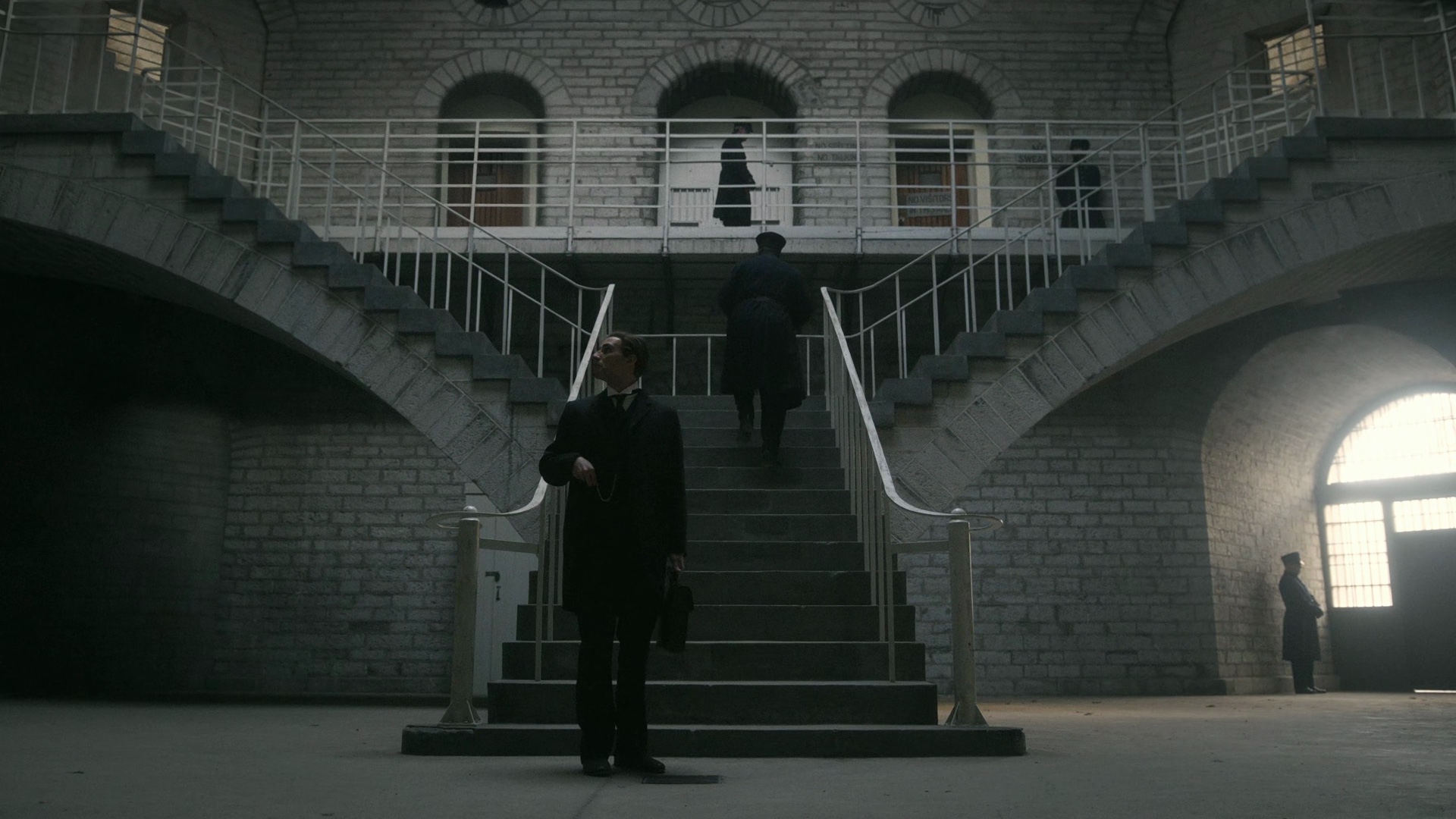
Production design of “Alias Grace” by Arv Greywal.
Continue reading »
Continuing the ongoing series of interviews on fantasy user interfaces, it’s my pleasure to welcome James Brocklebank. In this interview he talks about the ever-evolving set of tools at his disposal, the increasing demand for motion graphics world in film and other fields, working on load movies for video games, and being a part of huge sci-fi film productions in the last few years. In between and around, James dives deeper into his work on video games such as “Call of Duty: Black Ops” and “Titanfall 2”, as well as screen graphics on “Passengers”, “Ghost in the Shell” and the recently released “Pacific Rim: Uprising”.

Screen graphics for Ghost in the Shell. Courtesy of James Brocklebank.
Kirill: Please tell us about yourself and what brought you to where you are today.
James: I am a motion designer based in London, UK. I’d always loved drawing as a kid and studied art throughout school. It was when I was doing my Fine Art foundation course at Art College in Hastings, that I first discovered Photoshop and that steered me towards doing a degree in Graphic Arts and Design at Leeds Met University, where I specialized in photography, image manipulation and film making.
 Once I left Uni, I became a runner, essentially a tea boy, firstly in an editing facility in London and then at a VFX house.
Once I left Uni, I became a runner, essentially a tea boy, firstly in an editing facility in London and then at a VFX house.
All the while I was working in the evenings on my own portfolio and trying to learn as much software as I could. Then I got a job as a junior designer in motion graphics, first designing DVD menus and then working in music, making commercials for albums, promos, content for award shows and the odd CD cover, which was great, as CDs and music videos were some of the things that got me into wanting to do graphics in the first place.
I went freelance about 2008 and since then I’ve worked across a wide range of projects for a variety of clients. From broadcast, live concerts, projection mapping, branding, commercials, computer games and more recently I’ve been doing some film work which you’ve seen.
Kirill: Between the powerful digital tools at your disposal and the ideas in your head as the designer, is there more importance to one than the other?
James: I primarily start with the ideas. That can be the brief from the client or a self initiated project. If you’re doing film work, there’s the director and a hierarchy of people who have their own visions. The tools are there to facilitate you executing their visions.
That said, sometimes it can be a little seed of an idea that someone has, and that’s where you then go and explore. That’s where the software comes in amazingly handy, because you don’t actually know where you’re going to go. You’re experimenting and that’s why I really enjoy the look development stage. You’re playing around, pushing the software to see what it will do, exploring different approaches.
Kirill: In my little part of the world, there’s usually a team of designers that work on the overall experience, and the particular parts of it, like visuals, animations, overall flow. And then there are developers that take those mock and implement them. Does it feel that in your field you’re wearing both hats at the same time?
James: I come at it from a drawing/art background, but you need technical skill to make a living in this field. There’s a lot of software I have learned since the beginning of my career. The technology has developed massively, and with that the responsibility of what you need to know for each job has increased exponentially. I primarily work within motion design, but a lot of the jobs I now work in are more of a visual effects pipeline, which encompasses everything from 3D animation, compositing, simulations, camera tracking, etc. Not that I need to know all of the software that comes with that, as there are a lot of people working within each facet of the project, but you need to have an understanding of it all.

Screen graphics for Passengers. Courtesy of James Brocklebank.
Continue reading »
Continuing the ongoing series of interviews with creative artists working on various aspects of movie and TV productions, it is my pleasure to welcome Diana Trujillo. In this interview she talks about the art and craft of production design, finding stories that resonate, building lasting relationships in the industry, and creating worlds that feel authentic for the camera and the viewers. Around these topics and more, Diana looks back on her work on the first season of critically acclaimed “Narcos”, and dives deep into the spellbinding “Elizabeth Harvest”, a story of a brilliant scientist, his all-consuming obsession and a single-minded, tragic pursuit of the long-lost past.
 Kirill: Please tell us about yourself and your path so far.
Kirill: Please tell us about yourself and your path so far.
Diana: I was born in Colombia and my original field of study was architecture. In the middle of doing that degree, I went to New York for about a year, intending to study photography. I had a certain conflict between two dimensional and three dimensional art design, and before ending my career in architecture, I really wanted to see what was behind photography.
When I was there, I lived with some Colombian friends that were studying film in NYU. During my photography studies at the new school, I started to play with them to do kind of art direction. I started learning what art direction was and it made me consider that maybe this is something that I could be really good at. I’ve always been in love with cinema and I’m fond of art, but what I did not know was that you could choose that as a way of life.
I went back to Colombia and I finished my degree in architecture, but I always kept on coming back to that time in New York. As those friends of mine graduated, they went back to Colombia and created a production company. Andi Baiz was going to do his first feature called “Satanas”, and Rodrigo Guerrero the film producer called me asking me to be Andi’s visual consultant. I didn’t really study anything yet about the lenses or Set design, per se, but I knew about depth of field, layers and principles of architecture, photography and the basics of set decoration.
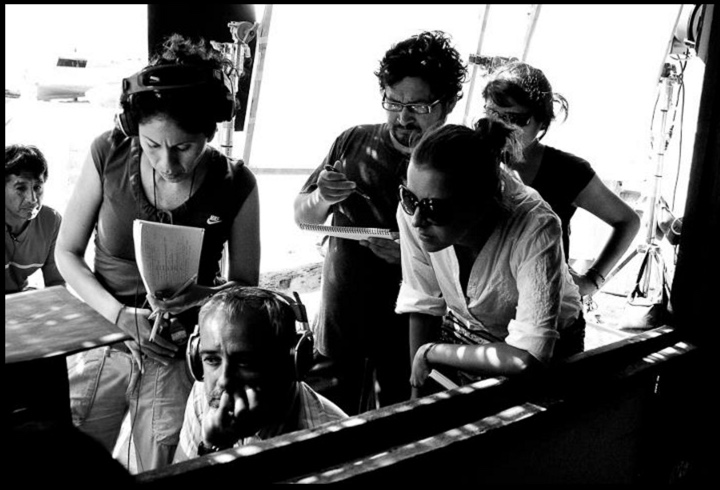
On the set of “Undertow”. Photography by H. Alvarez. Courtesy of Diana Trujillo.
I pictured everything in my mind, but I hadn’t put everything together. That collaboration was a turning point for me, and I never went back to architecture.
I was basically making all the aesthetic decisions with him. He had his production designer, art director, costume designer and makeup designer, and I remember this experience because nobody knew who I was. I was next to him and he asked my opinion on costumes, decorations and everything else. After that I decided that I really wanted to go into art direction.
My grandmother had a really big house with many different rooms and pieces of furniture and objects of many eclectic styles. I always liked that space, and I used to ask her to let me use the furniture. I started bringing these crazy collection pieces and showing them to my directors. After doing a couple of movies as a set decorator, they started asking me to be the art director. It all happened very fast. I used to draw the plans and to sketch the perspective of how a space for a frame will look. I had it in me, but I didn’t know about it until I started doing it.
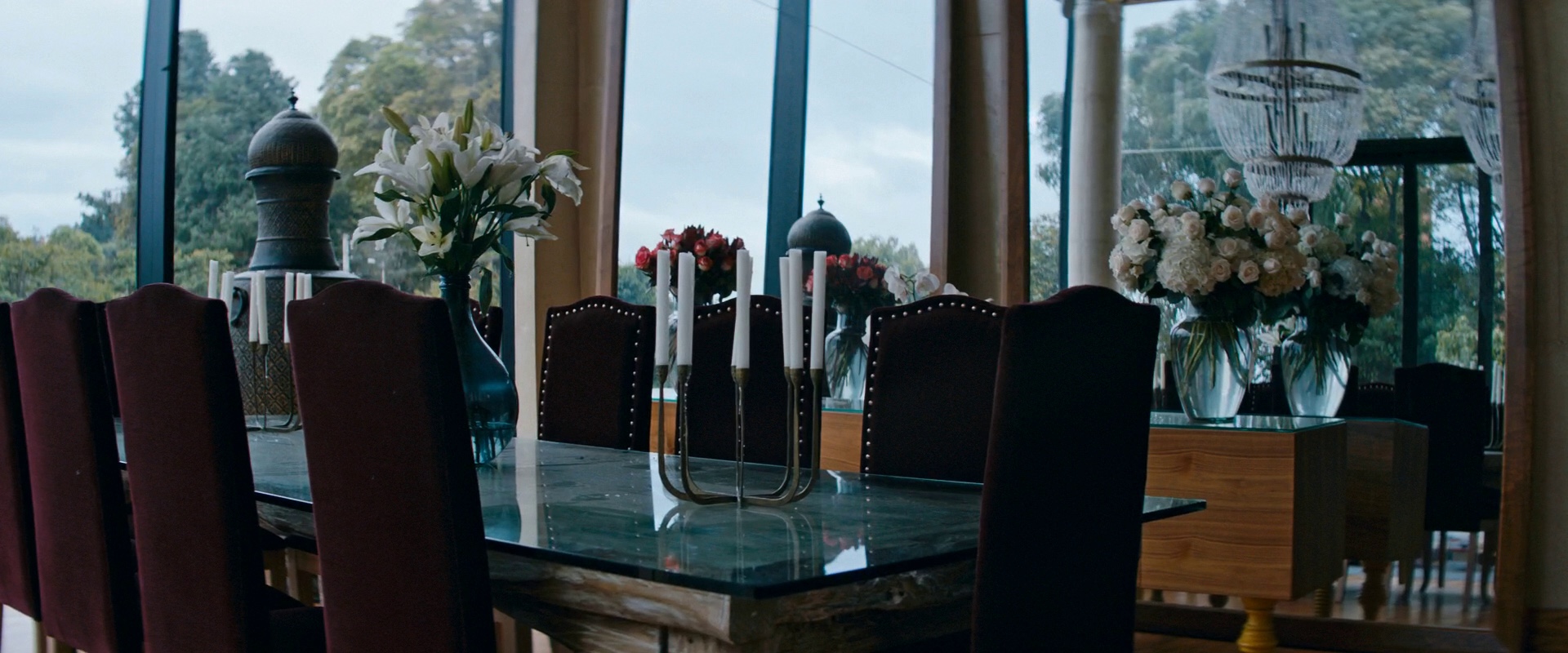
Still from “Elizabeth Harvest”. Production design by Diana Trujillo.
Kirill: If I can bring you back to your first productions, was there anything particularly surprising or unexpected for you?
Diana: What really caught my attention was that moment when the director says “Action”, and everybody has to stay silent and not move at all. It’s like the time freezes for a while. You have to really listen to what they’re saying. When I watched it, it looked like a ritual. It was the perfect place to be in, because you’re creating something in that moment.
You’re creating through the director of photography, through his camera. You can feel it around you, there is the silence, and then you see it. You’re looking at this tiny monitor,and you are looking at the work of 80 people. I remember saying that this is something that I really enjoy doing. Definitely it’s magical to be there, to be creating as a team.
Continue reading »
![]()
![]()
![]()
![]()
![]()